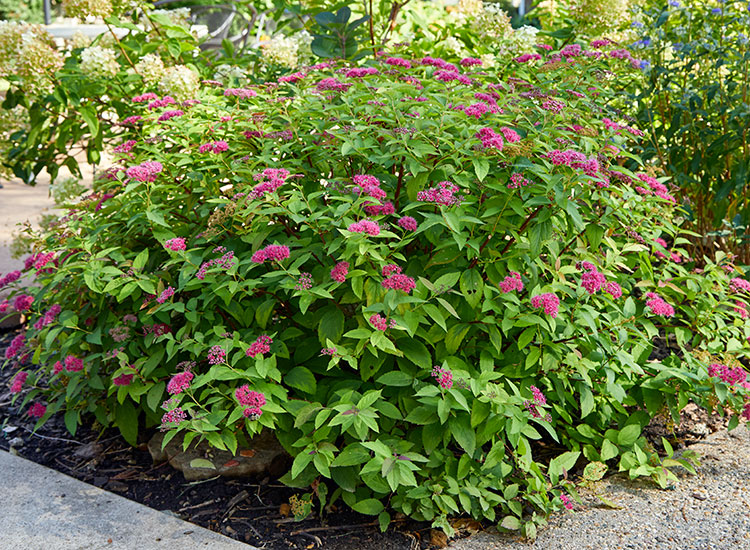Why Pruning is Crucial for a Healthy Spirea Bush
Pruning is a vital component of spirea bush maintenance, as it plays a crucial role in maintaining the overall health and appearance of the plant. By pruning regularly, you can promote healthy growth, encourage blooming, and remove dead or diseased branches. This, in turn, can improve the plant’s structure, increase its resistance to disease and pests, and enhance its aesthetic appeal. When deciding when to prune a spirea bush, it’s essential to consider the plant’s growth cycle and the time of year. Pruning at the wrong time can cause more harm than good, so it’s crucial to understand the best practices for pruning your spirea bush. Regular pruning can also help to maintain a desired shape or size, making it an essential task for anyone looking to keep their spirea bush looking its best.
Identifying the Right Time to Prune Your Spirea Bush
Determining when to prune a spirea bush is crucial to its overall health and appearance. The timing of pruning depends on several factors, including the type of spirea, its growth cycle, and the climate. For example, spring-blooming spirea bushes, such as Bridal Wreath, should be pruned immediately after they finish blooming, while summer-blooming varieties, like Goldflame, should be pruned in late winter or early spring. It’s also essential to consider the climate and region you’re in, as this can affect the growth cycle of your spirea bush. In regions with harsh winters, pruning in late winter or early spring can help promote healthy growth and encourage blooming. By understanding the specific needs of your spirea bush and the climate you’re in, you can determine the best time to prune and ensure your plant thrives.
How to Prune a Spirea Bush for Optimal Results
Pruning a spirea bush requires the right tools and techniques to achieve optimal results. To get started, gather a pair of sharp, clean pruning shears or loppers, depending on the size of your bush. Remove any dead, diseased, or damaged branches, cutting them off at the base. This will help prevent the spread of disease and encourage healthy growth. Next, identify any crossing or rubbing branches and remove them to improve air circulation and reduce the risk of disease. When cutting, make clean cuts at a 45-degree angle, just above a bud or lateral branch. This will help the bush heal quickly and reduce the risk of disease. For shaping and maintaining the desired form, prune the tips of the branches to encourage bushy growth and promote blooming. Finally, consider the type of spirea bush you have and prune accordingly. For example, Bridal Wreath spirea bushes require more aggressive pruning to maintain their shape, while Goldflame spirea bushes require lighter pruning to promote blooming. By following these steps and considering the specific needs of your spirea bush, you can achieve optimal results and enjoy a healthy, thriving plant.
Pruning Techniques for Different Types of Spirea Bushes
Different types of spirea bushes have unique pruning needs. Bridal Wreath spirea bushes, for example, require more aggressive pruning to maintain their shape and promote blooming. This involves cutting back the stems to about 6 inches from the ground in late winter or early spring, and then shaping the bush to encourage a rounded form. Goldflame spirea bushes, on the other hand, require lighter pruning to promote blooming and maintain their compact shape. This involves trimming back the stems by about one-third in late winter or early spring, and then shaping the bush to encourage a dense, rounded form. Little Princess spirea bushes require minimal pruning, as they naturally maintain a compact, rounded shape. However, they may benefit from light trimming to remove any dead or damaged branches and promote healthy growth. When pruning different types of spirea bushes, it’s essential to consider their unique needs and growth habits to achieve optimal results. By understanding the specific pruning needs of your spirea bush, you can promote healthy growth, encourage blooming, and maintain a beautiful, thriving plant.
Avoiding Common Pruning Mistakes
When it comes to pruning a spirea bush, it’s essential to avoid common mistakes that can harm the plant. One of the most common mistakes is over-pruning, which can stress the bush and lead to disease or pest problems. To avoid over-pruning, prune only what is necessary to maintain the desired shape and size, and never remove more than one-third of the bush’s foliage at a time. Under-pruning is another common mistake, which can lead to a leggy, unkempt appearance. To avoid under-pruning, prune regularly to maintain the desired shape and size, and remove any dead or damaged branches. Pruning at the wrong time is also a common mistake, which can cause the bush to produce new growth that may not have time to harden off before winter. To avoid pruning at the wrong time, prune in late winter or early spring, before new growth begins. By avoiding these common pruning mistakes, you can ensure a healthy, thriving spirea bush that provides beauty and interest to the landscape. Remember, when to prune a spirea bush is crucial, and pruning at the right time can make all the difference in the health and appearance of the plant.
The Benefits of Regular Pruning for Spirea Bushes
Regular pruning is essential for maintaining the health and appearance of a spirea bush. One of the primary benefits of pruning is improved air circulation, which helps to prevent disease and promote healthy growth. By removing dead or damaged branches, pruning also allows more sunlight to penetrate the plant, encouraging blooming and foliage growth. Additionally, pruning helps to maintain the desired shape and size of the bush, enhancing its overall appearance and making it a valuable addition to the landscape. Furthermore, pruning can help to increase the bush’s resistance to pests and diseases, reducing the need for pesticides and other chemicals. By understanding when to prune a spirea bush and incorporating regular pruning into a comprehensive care plan, gardeners can enjoy a thriving, beautiful spirea bush that provides years of enjoyment. With regular pruning, spirea bushes can become a stunning focal point in the garden, attracting attention and admiration from visitors and neighbors alike.
Pruning as Part of a Comprehensive Spirea Bush Care Plan
A comprehensive care plan for spirea bushes should include regular pruning, as it plays a crucial role in maintaining the overall health and appearance of the plant. Pruning should be combined with other essential care practices, such as fertilization, watering, and pest management, to create a well-rounded care plan. Fertilization, for example, provides the necessary nutrients for healthy growth and blooming, while watering ensures the plant receives adequate moisture. Pest management, on the other hand, helps to prevent infestations and diseases that can harm the bush. By incorporating pruning into this care plan, gardeners can ensure their spirea bush receives the necessary attention to thrive. It’s essential to understand when to prune a spirea bush, as pruning at the wrong time can cause more harm than good. By pruning at the right time, gardeners can promote healthy growth, encourage blooming, and maintain the desired shape and size of the bush. A comprehensive care plan that includes regular pruning can help to create a stunning spirea bush that provides beauty and interest to the landscape.
Tips for Pruning Spirea Bushes in Different Seasons
Pruning a spirea bush is a seasonal task that requires attention to the plant’s growth cycle and climate. Understanding when to prune a spirea bush in different seasons is crucial for maintaining its health and appearance. In the spring, prune spirea bushes immediately after they finish blooming to promote new growth and encourage blooming. Remove any dead or damaged branches, and shape the bush to maintain its desired form. During the summer, prune spirea bushes lightly to maintain their shape and promote healthy growth. Remove any suckers or water sprouts that appear, and trim back long branches to encourage bushy growth. In the fall, prune spirea bushes more heavily to prepare them for the winter. Remove any dead or diseased branches, and cut back the bush to about one-third of its height. This will help the bush conserve energy and protect it from harsh winter weather. In the winter, prune spirea bushes minimally, as the plant is dormant. Remove any dead or damaged branches, and shape the bush to maintain its desired form. By pruning spirea bushes in different seasons, gardeners can promote healthy growth, encourage blooming, and maintain the desired shape and size of the bush.







